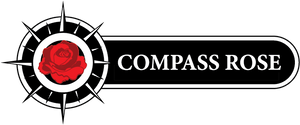TO BE OR NOT TO BE?
That is the question organisations face with the new revision of ISO 9001. Since a quality manual is no longer required, you must determine if having one adds value to your company. So, what is a quality manual?
A quality manual is a document that states the company’s intentions for operating the processes within the quality management system. It can include policies for all areas of the business that affect your ability to make high quality products and meet your customers’ and ISO’s requirements. These policies define how your department managers will implement procedures within the boundaries specified in the quality manual.
An important note: many other quality management system standards based on ISO 9001 are still requiring a quality manual. If your standard requires one, then you must maintain a quality manual.
USES
Here are some uses for a quality manual.
CONTENT
For users of ISO 9001:2015, the contents of your quality manual are completely up to you. But, remember that everything you say you do, you must show evidence that you really do it! So be careful what you include and make sure the policies reflect actual practices. Here are some common topics included in quality manuals.
DEVELOPMENT
To develop a quality manual, you might consider these steps:
EXAMPLE
As an example of how the quality manual policies should reflect the requirements of ISO 9001:2015 see the following section from a quality manual. Notice how the requirement itself precedes the company specific policy and records information.
XX Management Review
XX.1 Requirement: Top management conducts planned reviews of the QMS to ensure its suitability, adequacy, effectiveness and alignment with the strategic direction considering:
The outputs of management review are to include decisions and actions related to:
Retain documented information as evidence of the results of management reviews.
XX.2 Policy: Our management reviews are planned and occur on a [interval] basis. At a minimum, these reviews are attended by:
The Management Reviews are scheduled and a meeting agenda consisting of all required inputs is prepared.
Outputs from Management Reviews include the actions and decisions relating to any opportunities for improvement, needed changes to the QMS and resource needs.
XX.3 Records: The meeting minutes and outputs are retained on the [record name].


London, Birmingham, Manchester, sheffield, Cardiff, Leicester, Newcastle, Brighton, Aberdeen, Northampton, Swindon, Dudley, York, Stockton, Bourhemouth, Norwich,Peterborough, Mansfield, Telford, Ipswich, Huddersfield, Dundee, Doncaster, Chelmsford, Slough, Burnley, Hastings, London, Gloucester, Worcester, Exeter, Scunthorpe, Guildford, Nottingham, Liverpool, Bath, Stoke, Hull, Plymouth, Glasgow, Wolverhampton, Southampton, Milton-Bradford-Luton, Slough, Preston, Edinburgh, Southend on sea, Leeds, , QMS. Cambridge, Slough, Blackburn Burnley, London,Gloucester, Worcester, Exeter, Scunthorpe, Guildford, Nottingham and Derby, Warrington to Liverpool, Bristol and Bath